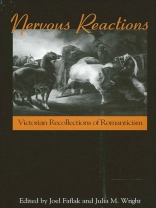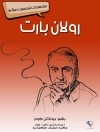Nervous Reactions considers Victorian responses to Romanticism, particularly the way in which the Romantic period was frequently constructed in Victorian-era texts as a time of nervous or excitable authors (and readers) at odds with Victorian values of self-restraint, moderation, and stolidity. Represented in various ways—as a threat to social order, as a desirable freedom of feeling, as a pathological weakness that must be cured—this nervousness, both about and of the Romantics, is an important though as yet unaddressed concern in Victorian responses to Romantic texts. By attending to this nervousness, the essays in this volume offer a new consideration not only of the relationship between the Victorian and Romantic periods, but also of the ways in which our own responses to Romanticism have been mediated by this Victorian attention to Romantic excitability.
Considering editions and biographies as well as literary and critical responses to Romantic writers, the volume addresses a variety of discursive modes and genres, and brings to light a number of authors not normally included in the longstanding category of ‘Victorian Romanticism’: on the Romantic side, not just Wordsworth, Keats, and P. B. Shelley but also Byron, S. T. Coleridge, Thomas De Quincey, Mary Shelley, and Mary Wollstonecraft; and on the Victorian side, not just Thomas Carlyle and the Brownings but also Sara Coleridge, George Eliot, Elizabeth Gaskell, Archibald Lampman, and J. S. Mill.
Contributors include D. M. R. Bentley, Kristen Guest, Joel Faflak, Grace Kehler, Donelle Ruwe, Alan Vardy, Lisa Vargo, Timothy J. Wandling, Joanne Wilkes, and Julia M. Wright.
Cuprins
Acknowledgments
Introduction
Joel Faflak and Julia M. Wright
I. NERVOUS CONTAINMENTS: RECOLLECTION AND INFLUENCE
1. De Quincey Collects Himself
Joel Faflak
2. Mrs. Julian T. Marshall’s Life and Letters of Mary Wollstonecraft Shelley
Lisa Vargo
3. Between Action and Inaction: The ‘Performance’ of the Prima Donna in Eliot’s Closet Drama
Grace Kehler
4. Nervous Reincar Nations: Keats, Scenery, and Mind Cure in Canada during the Post-Confederation Period, with Particular Reference to Archibald Lampman and Related Cases
D. M. R. Bentley
II. A MATTER OF BALANCE: BYRONIC ILLNESS AND VICTORIAN CURE
5. Early Romantic Theorists and The Fate of Transgressive Eloquence: John Stuart Mill’s Response to Byron
Timothy J. Wandling
6. Dyspeptic Reactions: Thomas Carlyle and the Byronic Temper
Kristen Guest
7. ‘Growing Pains’: Representing the Romantic in Gaskell’s Wives and Daughters
Julia M. Wright
III. HESITATION AND INHERITANCE: THE CASE OF SARA COLERIDGE
8. Snuffing Out an Article: Sara Coleridge and the Early Victorian Reception of Keats
Joanne Wilkes
9. Her Father’s ‘Remains’: Sara Coleridge’s Edition of Essays on His Own Times
Alan Vardy
10. Opium Addictions and Metaphysicians: Sara Coleridge’s Editing of Biographia Literaria
Donelle Ruwe
Bibliography
List of Contributors
Index
Despre autor
Joel Faflak is Assistant Professor of English at Wilfrid Laurier University.
Julia M. Wright is Canada Research Chair in English at Wilfrid Laurier University. She is the author of
Blake, Nationalism, and the Politics of Alienation, the editor of
The Missionary: An Indian Tale, and the coeditor (with Tilottama Rajan) of
Romanticism, History, and the Possibilities of Genre.












